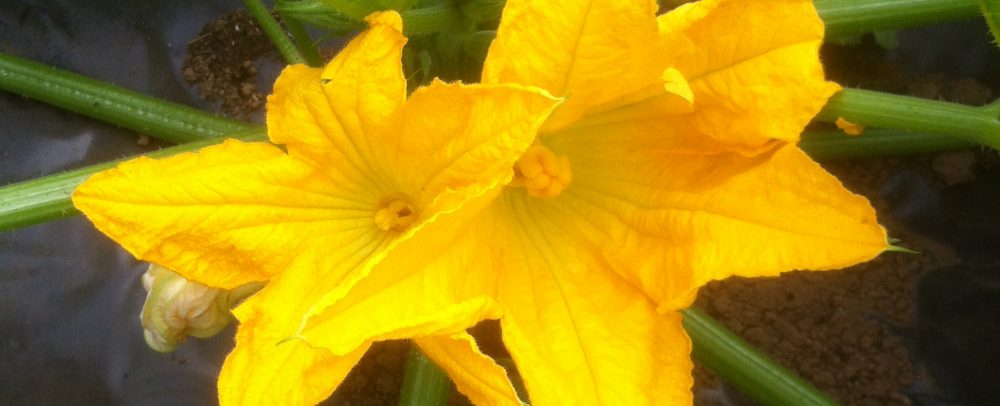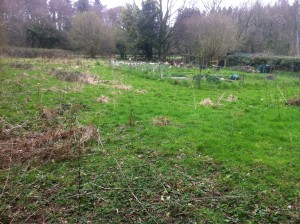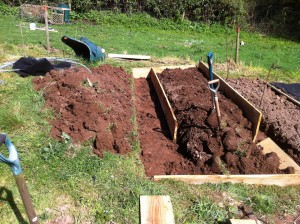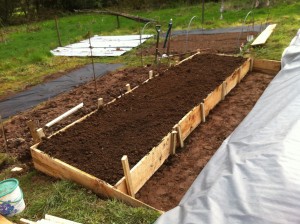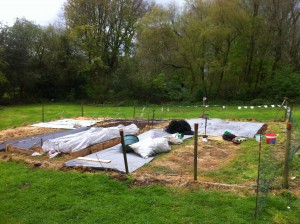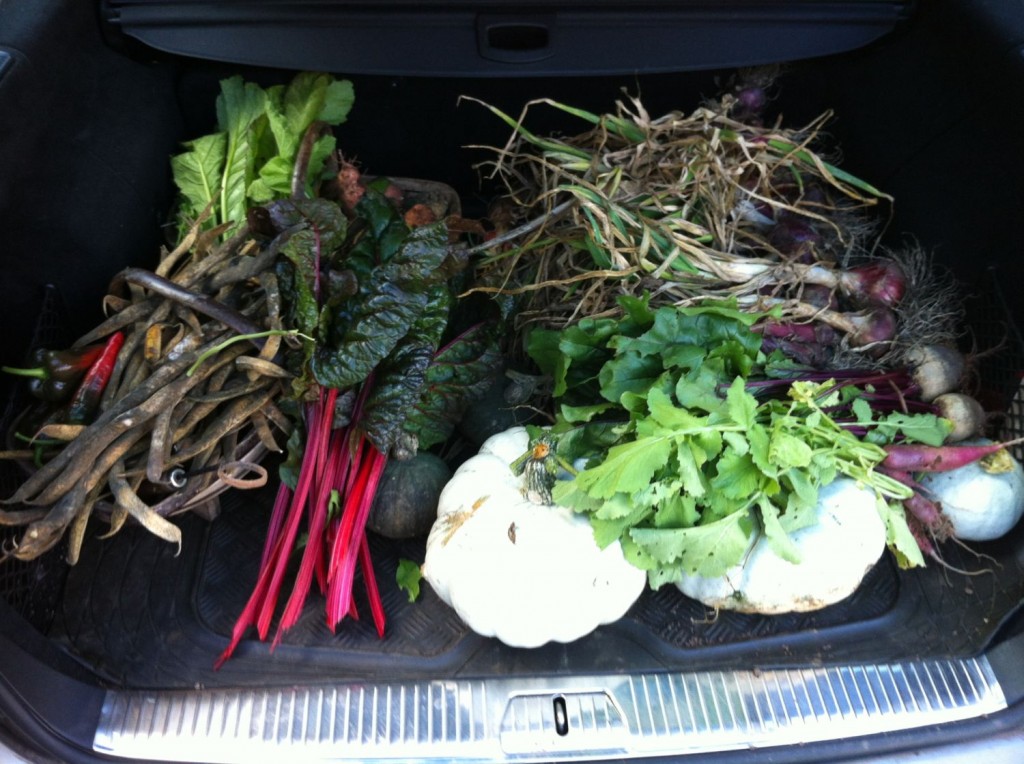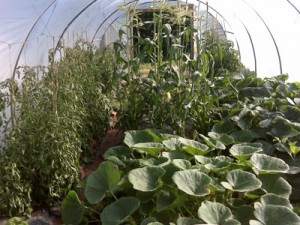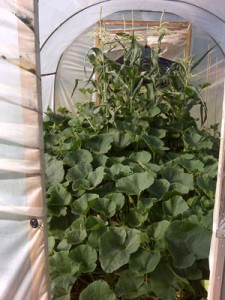I am often asked, “What should I sow now? What can I do when it is so wet? What can I do to be able to garden now?” Well, it may be raining and pouring, the ground may be sodden, but all is not lost.
I am a passionate believer in working with raised beds. Anyone who has them will be able to start work sooner because with a raised bed you avoid compacting the soil by walking all over it. I am currently living in a little cottage with a tiny garden whilst I search for a new home. Fortunately I have been able to prepare some ground for growing vegetables. Three weeks ago during a lull in the rain I double-dug a strip of ground some 1 metre wide by 7 metres long. Double digging is hard work but you only ever have to do it once, and if you create a raised bed as I have done you will never need to dig the ground again. I covered the new bed with black polythene to keep any more rain off, having first put a good 5cms layer of well-rotted manure on the ground. Yesterday the sun shone and I put two polythene cloches over the bed.
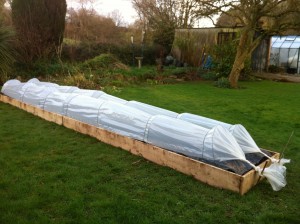
new raised bed with cloches
I have early seed potatoes chitting on a windowsill and next week I shall plant them through the black poly under the cloches where, hopefully they will grow on through wind and rain snug and warm. Don’t be put off by this ghastly weather. So long as you do not need to walk all over your vegetable patch and if you can either make cloches as I describe on the website, or, like me, renovate and resurrect old and forgotten frames, you can get lots of things started now. I dug over an old fruit bed during Christmas and created two raised beds which I duly covered with polythene. I had started some garlic off in pots in the greenhouse the month before and now I have planted them out, again through black mulch as I fear the beds are infested with weeds and I need to keep the ground clean. I have reduced the shock of transplanting by covering the young bulbs with frames and after a week or so, removed them. the large frame in this picture contains some of my Omani garlic that likes it hot, so I will leave the frame on until mid-summer.
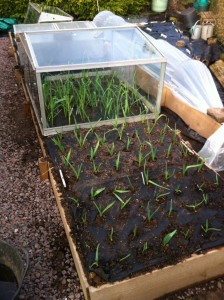
Large cloche contains Omani garlic. In the foreground is Chesnock Wight and Carcassone Wight
Herbs in pots like chives, mint, and parsley should be given a good high nitrogen feed and put under a frame if possible to bring them on
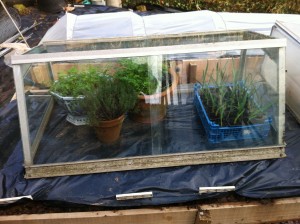
Parsley, thyme and garlic keeping warm and growing on
I have a green house so am growing early crops and finishing off over-wintering salad crops, all grown in troughs and pots. If you don’t have a greenhouse then do try and sow seeds of lettuce, spinach, radish, rocket, carrots even in deep pots or long troughs and place under a frame or cloche.
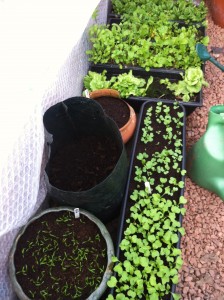
S
